ZoukSide Down – A journey with Brazilian Zouk
A personal blog aimed at contributing, and paying homage, to the most sensual, beautiful dance of Brazil.
Do You Know How the Way You Walk Affects the Way You Dance?
Walking is supposed to be so easy. In many dance styles, we hear the teacher tell us to just walk. In kizomba, I can’t remember the number of times, I heard all we needed to do was walk. I heard the same about tango. The same in West Coast Swing. And in all dances, if you want to cross-step when the guy asks you to walk, well you’re supposed to do just that, with some styling. But it turns out that walking isn’t the easy mechanics I thought it was.
I recently had some bad news from a foot specialist. Nothing that serious, nothing life-threatening, but it was annoying enough that it was affecting my dance lifestyle. When, at last, wearing high heels to dance zouk provoked yet another issue – inflammation in my foot – it seemed that it would never go away, and so I finally decided to pay the podiatrist a little visit…
After all, when something gets bad enough that you can’t even zouk properly anymore, it’s really time to get yourself checked out…
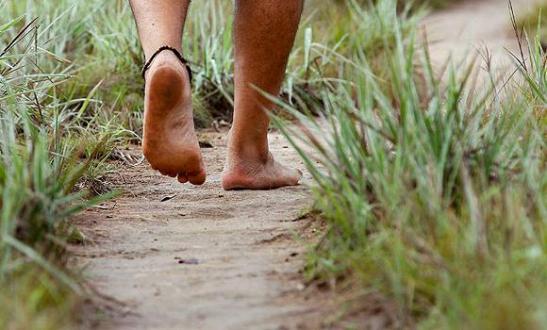
Walking barefoot on uneven surfaces could cure most feet problems according to many specialists. Walking in shoes on flat surfaces is what kills our feet, making our muscles weak and useless.
But even the specialist couldn’t answer all the questions I had. I had read a lot before going to see him, so I could ask him questions accordingly. I knew from some friends that most doctors or specialists don’t actually know that much, and many of them don’t even seem to care much about finding out the real issue with their patients. They often tell you to just “try” something and see if it works, maybe because they have limitations concerning health insurance. But sometimes, it’s just not good enough.
So I turned to my beloved Internet… It ended up answering many more of my questions than the specialist could.
The most interesting part of this new “journey” for me is, first, how it renewed my interest for physiotherapy. This is really something I want to study as soon as possible, when I can afford to do it.
Also, from a dancing point of view, I realized I had been so completely unaware of my feet, until then. Unaware of how my weight was distributed. Unaware of how it was affecting my ankles, my knees, and from there, even my hips! Unaware of what muscles I was using… and what muscles I was not using which I should be using. It seems to me, now, that I was not really aware I had legs at all!
I spent the last few weeks intensively focusing on how my feet and legs felt while I was walking in the street. I stopped, sometimes, and touched some muscles and did some movement to see how it affected my legs and then continued walking… Yeah, I must have looked strange, but it was pretty fascinating to discover how rich and diverse the feelings in my lower body can be, and that I had not truly paid attention to it until now.
One topic is the weight distribution in the feet. Basically, if you don’t have any genetic deformation of bones, we can say more or less that you are “normal”, and most of it can be treated, or at least improved. It can start as low as the arch of the foot itself, which is on the inside of your foot. If you are part of the 75% lucky people who have normal arches, this is not so important for you. But if you are part of the other 25% which is a pretty huge percentage, then you are concerned. All of us have flat feet when we are born, and the development of the arch usually takes place during childhood.
But 25% of us don’t and we end up having weak arches (or fallen arches). So I figured that, since so many of us are concerned, I might as well share it. Having “flat feet” does NOT mean that your feet look completely flat (unless you have genetic deformity since you were born, which is another topic): If you lift your foot up and look at it, it may well look “normal”, at least to the untrained eye.
But, as soon as you put it on the floor, if this arch flattens to the side, even a little, it means you have some degree of pronation:
“Some of the bones of the foot drop to a less stable position because the foot arch is too weak to keep them in proper alignment. The arches themselves may be unnaturally stretched which places stress on the entire foot – this is known as “flat feet”.” (Diversified Health)
“The various issues that typically arise from flat feet are not due to the feet themselves, but from over-pronation. Pronation is a normal rolling in of the foot at the end of every step we take in a run to absorb impact on the feet. Over-pronation is the case when the feet roll inwards too much, past the point necessary for shock absorption. “(Runsociety)
Obviously, if you are walking either way, it would have a huge impact on how you control your body and your balance, particularly in zouk where girls have to turn with their head and upper bodies on the side and control their turns from their feet.
If you are not sure about your own feet, you can check this short video for a quick explanation of pronation and how to find out approximately whether you are a normal “pronator”.
Also, if you have flat feet AND you have any pain or strange things happening in your knees, tibias, hips, or even spine and neck, it can simply come from your feet (meaning that if you treat your feet, everything else MAY go away, too. Pretty crazy huh…).
From Somaconstruct
There are quite many reasons for having flat feet. They can develop from injuries, weak ankles or weak ligaments and tendons in the lower legs. Particularly if it started after an injury, when you were already an adult, your whole body as well as your balance can be deeply affected by it.
In any case, strengthening exercises can help a huge deal. If you are interested in learning more about the topic and what exercises are beneficial, here is a great video:
For those who don’t have this problem (which is actually quite common among dancers, too, from what I found out), you can still improve your balance a great deal with exercises done on balance cushions, like the one I was recommended to get. They are actually used not just for rehabilitation but also by athletes doing balance and strengthening exercises. And they can also help improve your proprioception (your ability to sense the position of your body parts without looking at it).
As you can see in the next few pictures, they can be used for a variety of things. I intend to make the most of this one and I look forward especially to seeing how much it will improve my balance when I dance! After all, if this is supposed to help me get stronger feet and legs, it means that my zouk should improve, too…
To be continued…
Author of this article: Gaëlle Céline Le Vu
Let me know if you liked reading this Post! 🙂
You can also write a review or leave your comments here and share the article on Facebook!
Find out about other posts written by ZoukSide Down by clicking here!


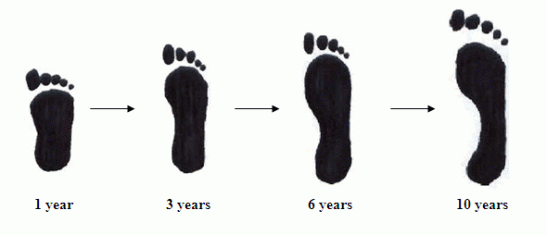
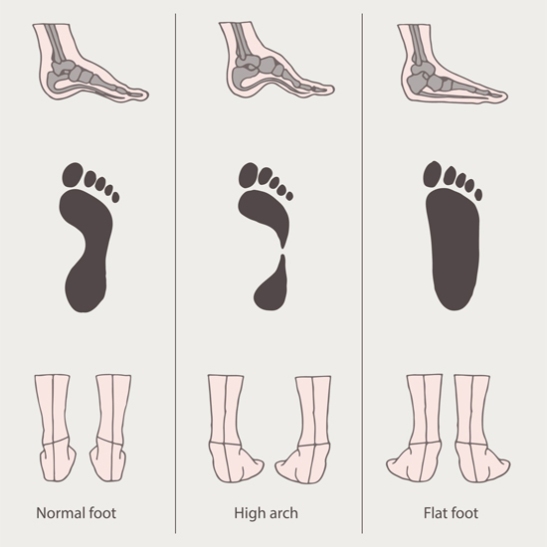
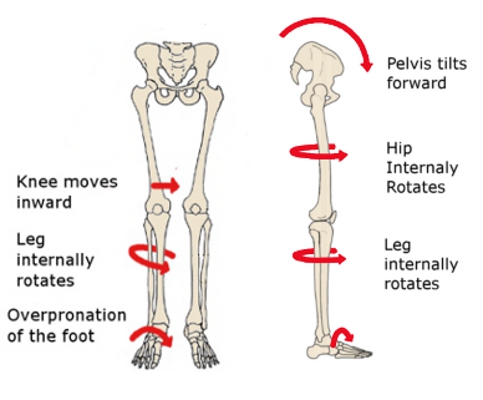
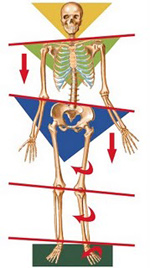
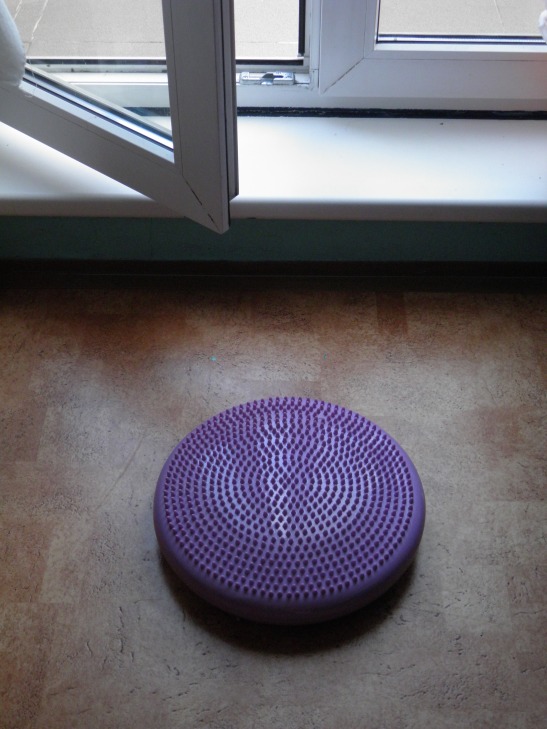
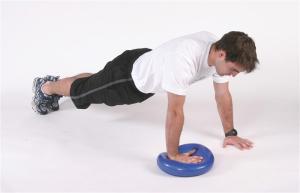
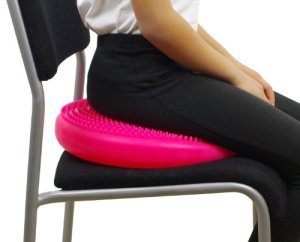
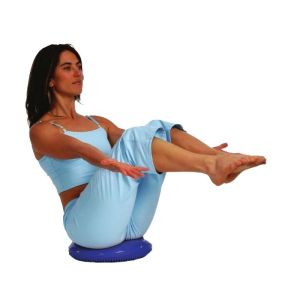
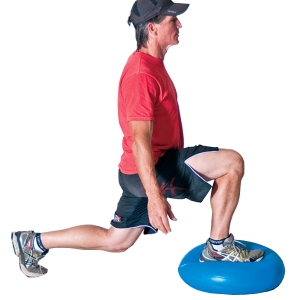
This is AMAZING. Thankyou so much for writing this post. It’s explained a lot of problems with my posture everyday and also my balance while dancing. I’ve always had flat feet and never developed an arch in my foot, which I believe may have affected my posture to the extent that I now have inward knees (knock knees?) which also affect my balance. My SO and I have had this suspicion for a long time and now I’m quite convinced that I need to do something about my feet and the way my legs are aligned…..
LikeLiked by 1 person
Hi Nikki. Thank you for leaving a comment!
Inwards knees can definitely come from having flat feet, but they can also have other reasons.
The best would be for you to get yourself checked by a specialist/physiotherapist, etc. Sometimes one specialist tells you one thing and another one tells you another thing. Not all specialists are good at what they do, so if you are unsure, don’t hesitate to go to a few different people.
Myself, I never had really inwards knees, but after I started taking care of my legs alignment, I did notice my knees moved outwards a bit and I just looked better when I went to classes like ballet or jazz dance. So I guess they were a little inwards and I just didn’t notice…
It may be that, for you too, having some balance cushion exercises would help correct some things you have.
But do go to a specialist, too! 🙂 And enjoy asking them all the questions you want! It’s always better to know the “Why’s” before you do anything!
LikeLike
I’ve always had an issue with balance and I could not figure out why until reading this excellent article. My flat feet and lack of balance now makes a lot of sense and have given me the information I need to correct my balance.
Thank you for effort to create and share your knowledge, it is very much appreciated.
LikeLiked by 1 person
Thanks a lot for your comment, Julian! I’m glad it helped you! If possible, I recommend you to see a podiatrist, too. He might be able to prescribe you physiotherapist sessions – so you wouldn’t need to pay for them – and you would get a lot of knowledge and exercises from it 🙂
I just love it, personally. It makes me feel like I can do something about it all (and hopefully it works!)
LikeLiked by 1 person
You are very welcome Gaëlle,
In fact you have done me a great service because I am very passionate about becoming the greatest dancer I can possibly become but the problem with balance has always held me back.
I love my Zouk and late last year I finally realised I need to work on core basics to excel further so I stared learning Ballet this year because it’s the basis of all dance in my opinion and I hoped it could address my issues with balance for example. I have struggled with Ballet and after reading your excellent article about balance I now know the root cause and answer, which is fantastic.
Yes, thank you very much also for the follow-up advice. I will see a podiatrist and seek a referral to a physiotherapist to help strengthen the muscles in my feet etc.
I very much appreciate the knowledge you kindly share with us Gaëlle.
I am a BIG fan of your work, thank you!
LikeLiked by 1 person
I must say that I also like it when a teacher promotes the basics.
I remember when I first started in Prague, everyone jumped through ‘beginners’ because they all wanted to be ‘advanced’ or ‘intermediate’ so fast! In the end, I don’t think it helped anyone, and I felt like I was at a dance competition than in a real community.
I’m now ‘intermediate’ I think but feel better for having taken the time to keep repeating the basics.
And even now when I go to a beginners’ class, I * always * learn something new 🙂
LikeLiked by 1 person